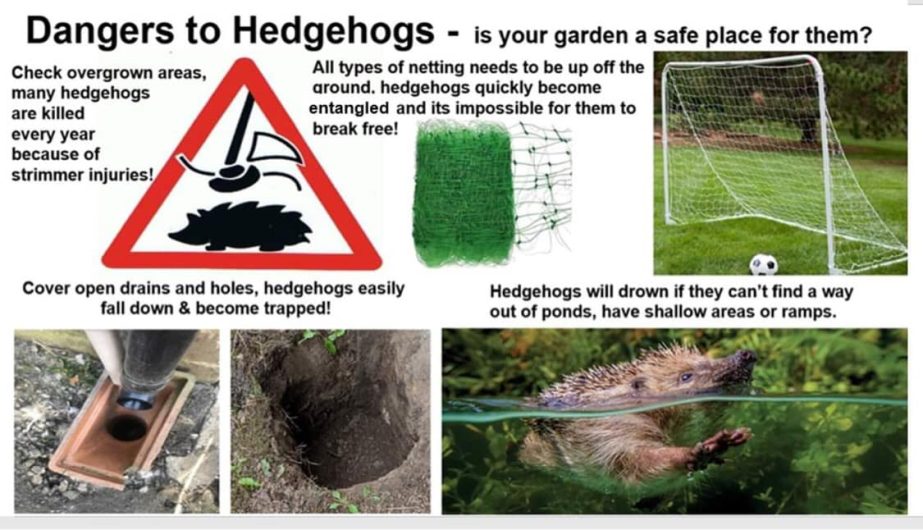Hedgehog (Erinaceus europaeus)
Meet one of NESBiP’s Big 5, the Hedgehog. These spiky little mammals were also a North East Big 5 and were chosen to remain because they are still struggling. Unfortunately, the biggest threat is our vehicles and habitat loss. More habitat connectivity is needed, like a small hole in your garden fence. Recording sightings (dead or alive!) is an easy way of helping this lovely mammal.
We asked local Hedgehog champion, Sue Cumming, what she loves about hedgehogs and why and how they need our protection. Check out his answers below.
What is a hedgehog, and why are they locally important?
Hedgehogs are adorable spiny mammals native to Britain. They typically inhabit gardens, parks, and farmland, depending on hedgerows and the edges of woodlands for food and shelter. These creatures hibernate during the winter and spend most of their time sleeping. Hedgehogs play a vital role in controlling pests, earning them the nickname “gardener’s friend” due to their diet of slugs and insects. Once widespread, unfortunatley their populations are now declining. The primary threat to their survival is habitat loss caused by development, farming, and changes in urban gardens.
What can people do locally to protect hedgehogs?
- Create hedgehog friendly gardens in your neighbourhood that include hedgerows or fencing with gaps in them (hedgehog highways), and native plants. No one garden is enough. They need neighbourhoods.
- Put in ramps in ponds, holes and cattle grids to prevent them from getting stuck.
- Stop using pesticides and herbicides in the gardens. Use eggshells or coffee grounds around your plants you need to protect.
- When strimming, mowing or lighting bonfires, check for hedgehogs.
- Report any sightings of hedgehogs, whether dead or alive, to NESBReC. This will enhance researchers’ understanding of their distribution and population size. Additionally, it will aid researchers and policymakers in determining the best course of action for hedgehog conservation.
- Food and water can be left out for hedgehogs to encourage them into your garden. Tinned dog and cat food or crushed dog and cat biscuits work best. Always replace with fresh food and water daily.
- Ensure you wash dishes every day with hot soapy water and rinse well.
- Never leave out bread or milk. Bread isn’t very nutritious, and milk can cause diarrhoea.
When is the best time to take action for the Hedgehog?
Your top 3 tips for protecting the Hedgehogs.
- Stop using chemicals in your garden
- Create a hedgehog-friendly garden and encourage neighbours to do the same
- Put out ramps in holes, ponds and cattle grids.
What is your favourite fact about hedgehogs?
A baby hedgehog is called a hoglet. A group of hedgehogs is called a Prickle!
Do you have any good examples people could learn from?
We do not, but Hedgehog Street has some excellent resources to help you get started – 🛠 Toolkits to get started – Hedgehog Street.
Biodiversity Villages, Towns and Neighbourhoods also have great resources and seminar videos to help – Hedgehogs – Biological Recording.

Sue Cumming
Aberdeen City Council






